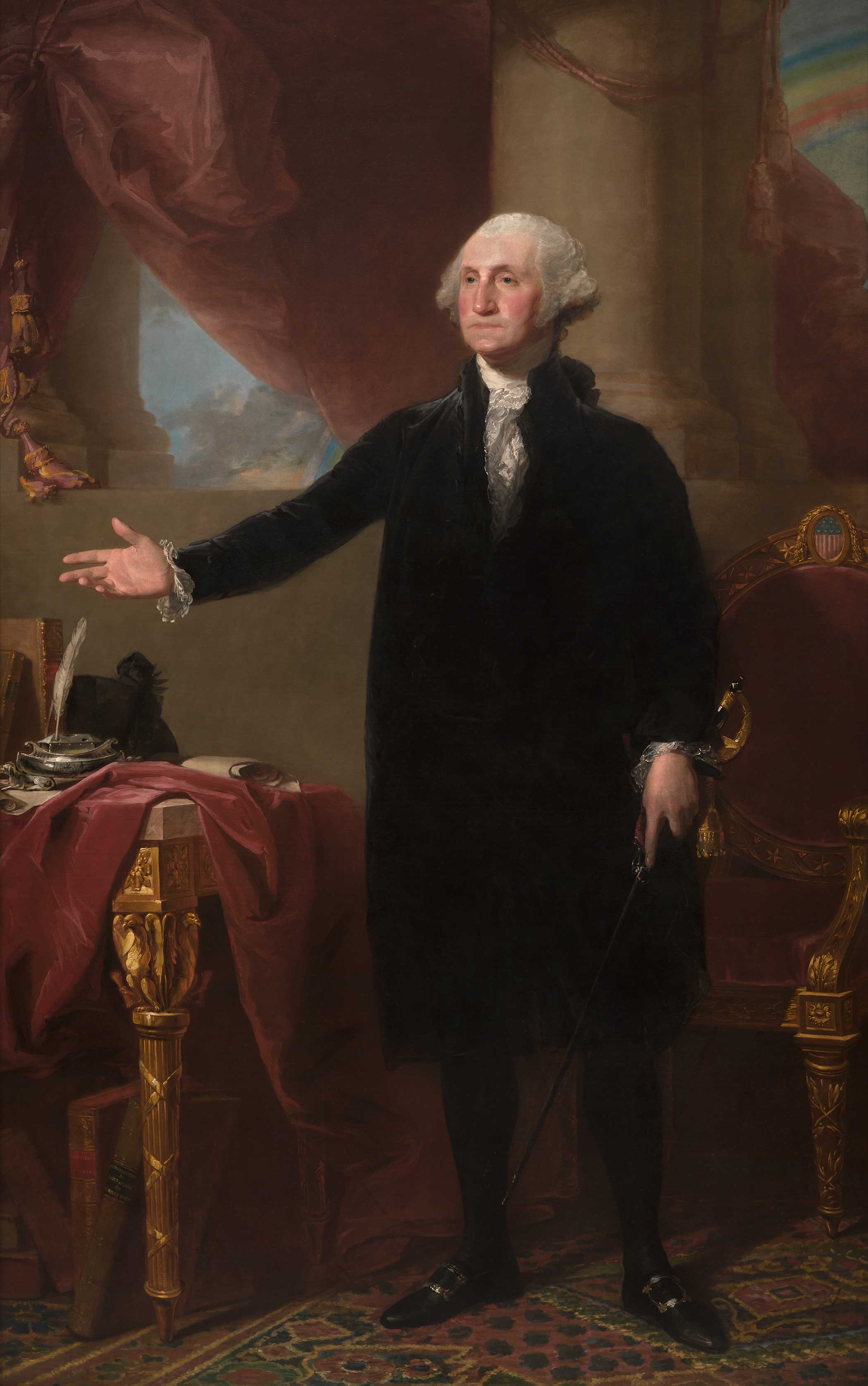Ancient Symbols in an American Classic

On view at the National Portrait Gallery, the “Lansdowne” portrait of George Washington is a familiar emblem of American political history. Yet modern viewers might be surprised to find several artifacts from ancient Rome sharing a canvas with the President. Carefully chosen by the artist Gilbert Stuart, these classical signs add an extra layer of meaning to the Lansdowne’s patriotic message.
Classical imagery in the Lansdowne begins with Washington himself, whom Stuart portrays extending his arm in the act of addressing Congress. Known as ad locutio, this oratorical pose was a favorite among Roman sculptors, appearing in the famous Prima Porta statue of Caesar Augustus. Stuart wove classical references into Washington’s surroundings as well, placing four columns in the background in a nod to Roman architecture. To the viewer’s left, a crimson cloth is displaced to reveal the ornate table leg beneath, whose curious design depicts a collection of bound rods. Termed fasces, these bundles match the traditional regalia of ancient Roman magistrates, whose bodyguards would carry axes tied together by leather thongs. Long before the modern Italian Fascist movement adopted the formidable bundles as a monogram, Roman fasces traditionally appeared in painting and statuary as a symbol of state authority.
Stuart’s choice to surround the President with these imported symbols coincided with the neoclassical movement, a rediscovery of ancient Roman culture that pervaded eighteenth-century Europe and America. Deeply conscious of America’s newcomer status on the international scene, the founding generation hoped that using these venerated models would legitimize their new nation in the eyes of their Old World neighbors.
Each generation of Americans has used historical precedent to affirm its undertakings. Just as legislators today invoke the ideas of the Founders, artists in Washington’s day reached back to antiquity for creative inspiration. By imbuing the Lansdowne portrait with Roman references, Stuart used artifacts from history in order to promote the American experiment.